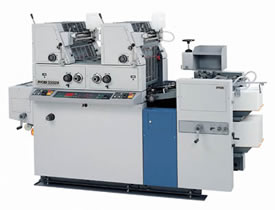Offset Printing

Offset printing remains the best quality type of printing available for graphic designers, particularly when image quality is concerned. Technology has developed so that the computer-to-plate system delivers superlative accuracy and quality.
Traditional offset printing enables more choice when it comes to print materials. Many graphic design projects demand unusual paper types and sizes, specialised inks and finishes. If this is the case with your project we will recommend offset printing. Special effects like spot varnishes are far better quality when done through traditional offset printing.
The combination of the Pantone Matching System and the Pantone inks makes traditional offset printing the best choice when complete control is needed and colour accuracy is paramount. The four colour process used for digital printing simply cannot compete with traditional offset printing presses, so if colour counts, opt for traditional offset printing.
If your graphic design project is high volume, traditional offset printing is not only more cost effective but can be quicker. Much of the costs and time involved with traditional offset printing relate to the preparation and press set up. However, if you have a high volume print job the unit costs are drastically reduced, because once the set up is complete the extra units are relatively cheap to print.
Offset printing can be slower and more costly for lower volume print jobs than digital printing. This is because of the time it takes to set a traditional printing press up for a job, which raises the individual unit prices for shorter print runs. Digital printers remain the best choice for quick and low cost short run print jobs.
